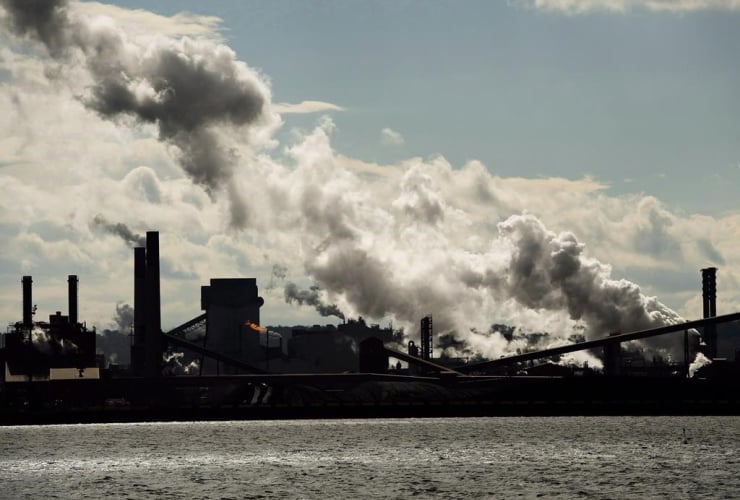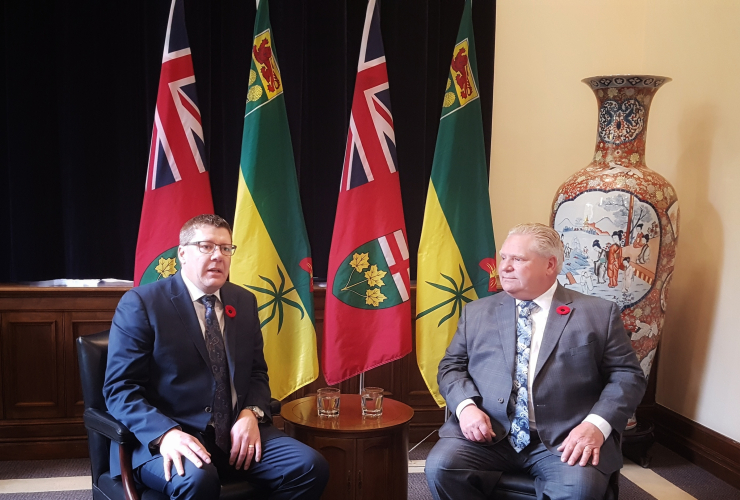Climate-change advocates and renewable-fuel producers want Ottawa to make sure new natural-gas power plants have to pay a price for every ounce of their greenhouse-gas emissions by 2030.
Canada is finalizing the regulations for its carbon-pricing system for big industrial emitters. The rules will apply to any facility that produces at least 50,000 tonnes of emissions a year, including electricity generated by fossil fuels such as coal, natural gas and diesel. Ottawa is weighing the need to reduce Canada's emissions against a desire not to hurt consumers by forcing electricity companies to raise rates too quickly.
The Canadian Council on Renewable Electricity — whose members include producers of wind, solar, hydro and tidal power — and some environment groups want Ottawa to make the system strong enough to discourage new fossil-fuel electricity plants.
"The idea is to send a signal that even for existing generation, the closer you get to 2030 the more emissions should be exposed to the carbon price," said Jean-Francois Nolet, vice-president of the Canadian Wind Energy Association.
As the rules stand now, electricity producers will only pay the federal carbon levy on a small portion of their emissions.
Canada's carbon pricing system has two components: the direct carbon levy that individuals and smaller organizations will pay on fuel they use to drive, heat their homes and power their electronics; and a separate levy for big industrial emitters.
Only provinces that don't have their own carbon levies will be subjected to the federal systems. Right now those are Saskatchewan, Manitoba, Ontario and New Brunswick. The big-emitters system for industry will also be applied in Prince Edward Island, Yukon and Nunavut, which asked to use it.
The industrial system will see Ottawa determine the average emissions produced by each type of fuel, and the cap is set at 80 per cent of that average. Power companies will pay the carbon levy — $20 per tonne of greenhouse gas produced in 2019, and increasing regularly — only on the emissions over that cap.
Ottawa's current proposal is that the cap be set at 800 tonnes per gigawatt-hour of electricity produced by coal, 550 tonnes for diesel and 370 tonnes for natural gas.
Nolet says the renewables industry is lobbying for Ottawa to ratchet down those caps by at least five per cent a year for existing facilities. For new facilities, he said the hope is the levy will be charged on 100 per cent of emissions by 2030.
Canada has 16 coal power plants left and intends to phase most of them out by 2030. There are more than 90 natural-gas plants, with 44 of them in the provinces affected by Ottawa's carbon price.
Catherine Abreu, executive director of the Climate Action Network Canada, said there is a fear that natural gas will be the most common choice to replace coal, and while gas is less dirty than coal it still has significant emissions. A big Canadian natural-gas plant emits more than 1.5 million tonnes of greenhouse gases each year.
Abreu would like new natural-gas plants to be approved only after assessments that show renewables are not an option for that region, and only with the highest emissions standards possible.
"We need a combination of regulations that enforce really strict performance standards and fiscal signals that disincent the dash to gas," said Abreu.
A spokeswoman for Environment Minister Catherine McKenna said the carbon price is just one of the mechanisms Canada is using to reduce emissions, and that it is still working with interested parties as it works toward its final decisions on the electricity sector.
Canada needs to cut almost 200 million tonnes of annual emissions to meet its promise under the Paris climate change agreement. That's the equivalent of taking more than 42 million cars off the road.





Comments